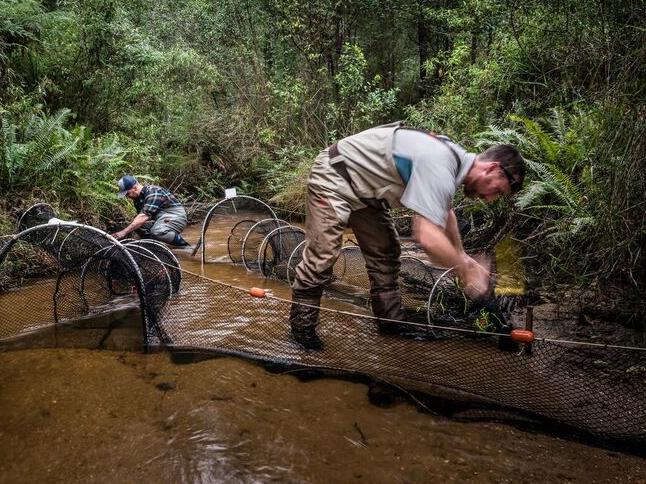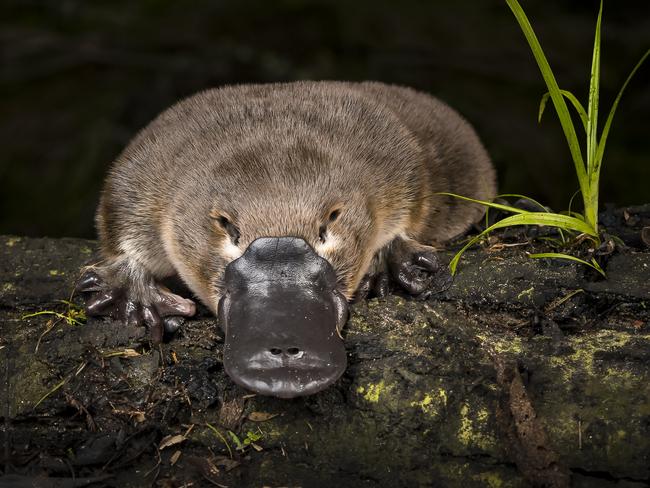Secret platypus trail uncovered in Melbourne’s waterways
Melbourne researchers have used environmental DNA to track Victoria’s highly elusive platypus population, and uncovered where the shy creatures may be found in the city’s creeks and rivers.
Victoria
Don't miss out on the headlines from Victoria. Followed categories will be added to My News.
The movements of Melbourne’s highly elusive platypus population have been uncovered by local researchers’ using innovative technology to track the iconic monotreme.
The Melbourne Water-led program involved sampling water at 1800 locations across Melbourne’s creeks and waterways — from the Macedon Ranges to the Mornington Peninsula — between 2021 and 2023.
Using eDNA — known as environmental DNA — ecologists were able to detect traces of DNA shed into the water from the mucus, urine, faeces, skin and saliva of a platypus.
Now, it can be revealed that the extremely shy animals are living and foraging in dozens of creeks and rivers throughout greater Melbourne, with a positive data result even recorded in the city section of the Yarra River.
While the data doesn’t conclude that platypus are actively living in the waters off Southbank, it could mean they are regularly travelling into the area in search of food.
Melbourne Water’s manager of waterways and wetland research Dr Rhys Coleman said using eDNA provided “crucial insights” into platypus’ activity because DNA traces remain in the water for days to weeks after the animal has been present.

“Platypus are quite shy, occur in a variety of habitats and are predominantly nocturnal, so it can be difficult to monitor their activity through traditional methods alone – particularly where rivers are wide, deep or fast flowing,” he said.
“It may surprise many Melburnians to learn that there are platypus in their local creeks and rivers.”
Analysis of the eDNA also revealed platypus sightings in the inner city local government areas of Melbourne, Yarra, Stonnington, Maribyrnong and Boroondara.
Dights Falls in Abbotsford has a confirmed platypus population, while further out they were seen in the Maribyrnong River, Dandenong Creek in Knox and the Mullum Mullum Creek in the outer east.
Dr Coleman said eDNA readings on the Mornington Peninsula area are “particularly interesting” to scientists because a platypus has never been caught in that region.
“With further eDNA surveys, we hope to get a clearer picture about how platypus might use those Mornington streams,” he said.

The waters of the Yarra River throughout the city centre aren’t ideal conditions for platypus, Dr Coleman said, but the river’s highly urbanised inner city sections have long stretches of native vegetation and reliable water flows.
“The Yarra River essentially acts as a ‘highway’ for platypus to be able to travel to more natural areas,” he said.
“Despite the lower Yarra being heavily urbanised, much of the river upstream remains in relatively good condition.”
Melbourne Water will undertake more platypus surveys this spring breeding season as part of its 30-year monitoring program.
The recent intensive eDNA mapping effort helped researchers fill the gaps at deep, fast flowing or hard to access sites that are too difficult to survey with traditional methods - such as capture and release.
Dr Coleman said in the face of declining numbers, it’s more important than ever to monitor where platypus live.
“Climate change and increasing urbanisation are impacting platypus habitats, and we must seize every opportunity to protect our precious waterways to stabilise their numbers,” he said.
“With urbanisation comes increased water run-off from hard surfaces such as roofs, driveways, and roads into stormwater drains which flows into waterways destroying platypus habitats and introducing contaminants, including litter that can become tangled around animals and cause mortality.
“Tackling the complex issues that threaten platypus requires collaborative efforts, including all levels of government, waterway managers, urban planners, scientists, traditional owners and the community.”
Originally published as Secret platypus trail uncovered in Melbourne’s waterways



